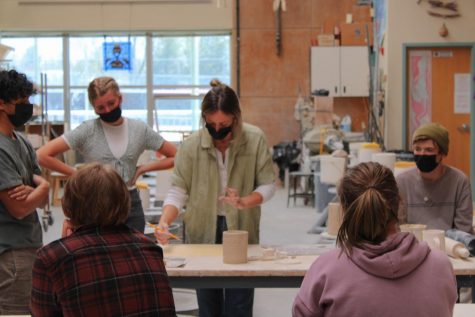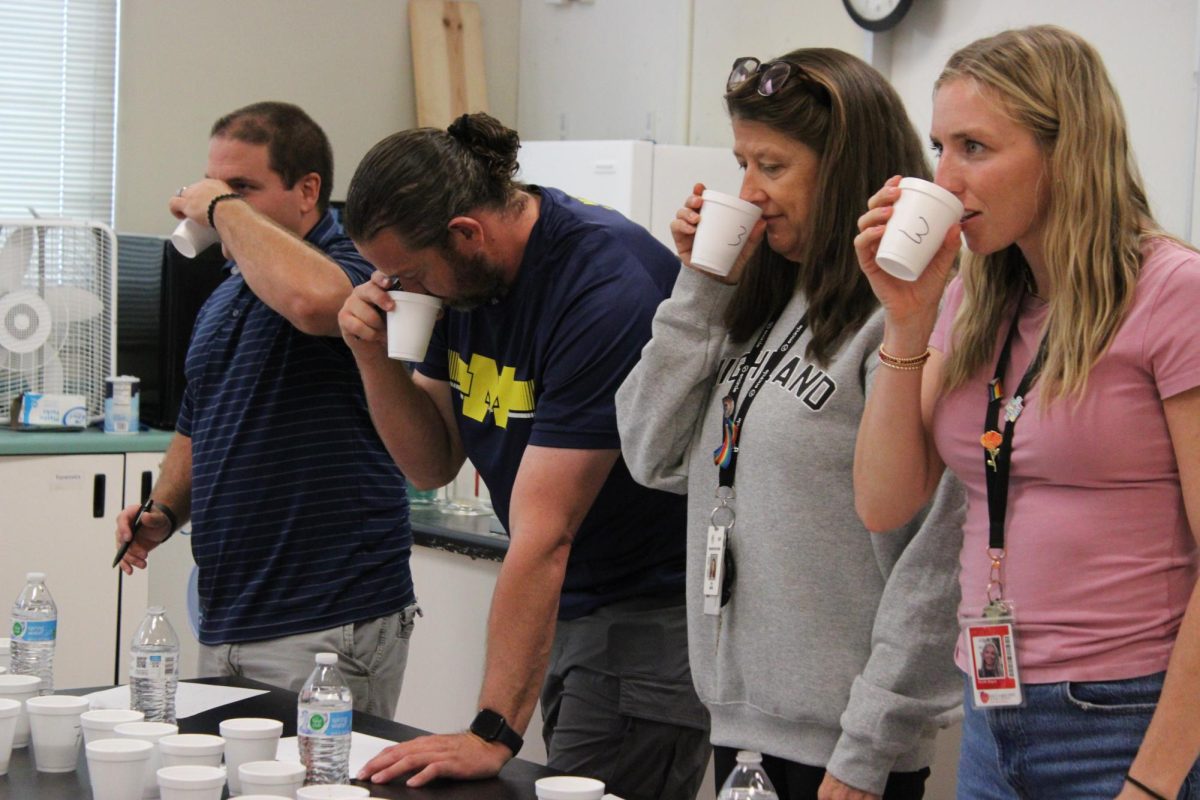Ceramics in the Digital Age
May 11, 2021
Ceramics in the Digital Age

It’s no secret that online learning has disrupted learning for the last year, teachers talk to unenthusiastic black boxes on a screen, students struggle to retain what they learned given the new A day B day term divide, but of all the classes most affected Ceramics might take the cake.
When the news of online learning for the year came, ceramics teacher Blair Porter was absolutely panicked, “I had no idea how I was going to teach ceramics online. Just ask principal Chatterton, I showed up in his office crying!”
For Ceramics, “hands-on learning” is critical, “the tools, equipment, and studio space are really important to the success of the progress made”, said Porter. Aspects of the class like the pottery wheel, and in-person problem solving could not be easily substituted. Eventually, students would be able to pick up clay from the school and use it at home, this however presented a variety of challenges.
“I know they were struggling with projects and creations at certain times, and only being able to guide them through problem-solving on zoom was hard”, recalls Ms. Porter. The unique skills and techniques typically developed in the ceramic studio had to be figured out at home.
However, Ms. Porter saw the class as a good way to craft a creative outlet for students who had been stuck inside bored for so long. With students feeling overwhelmed or lost in the online environment Ms. Porter set out to make the class something to look forward to, rather than a chore, “I felt like ceramics was not the class that needed to stress them out during a global pandemic.
There were some early hiccups, before students could take home clay there was an increase in paper assignments to learn what was needed. Students were understandably frustrated; most took ceramics hoping for a break from assignments and quizzes and rather a chance to spend time in class with friends making art. Ms. Porter understanding this tried to get clay into the hands of students as soon as possible.
With the gradual transition to in-person learning, Ms. Porter was originally nervous. She worried there may be hesitancy in jumping right into ceramics hands-on in person, but the opposite happened. Ms. Porter has noticed a great improvement in the quality of students work, in-person attendance is high and there’s an atmosphere of enthusiasm for ceramics in the classroom, “I think students are genuinely happy to be back in school,” Porter said, “there is a sort of a natural social energy in ceramics that is really positive for them.”
Porter feels that the classes which take kids out of the virtual environment, and allow for more social interaction are most important right now, “they are looking for and craving classes that steer them away from so much screen time.” She said.
While we don’t know what the future of the pandemic holds it seems that there is at some level a return to normalcy for ceramics and other in-person courses which will continue to provide a creative outlet for students throughout otherwise stressful times.




























